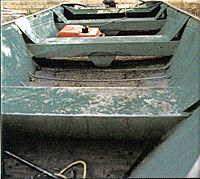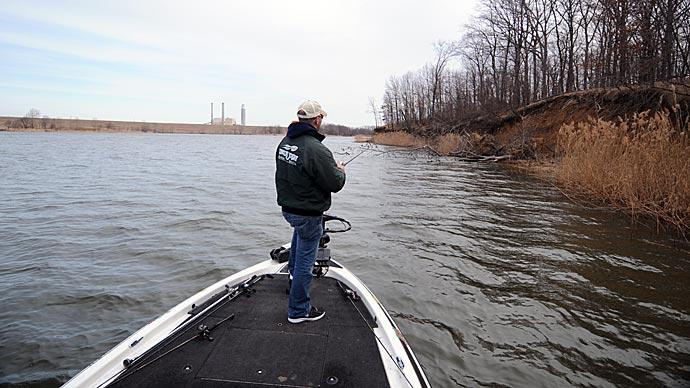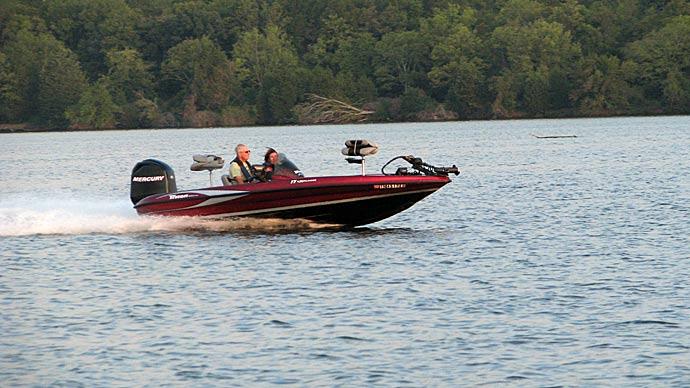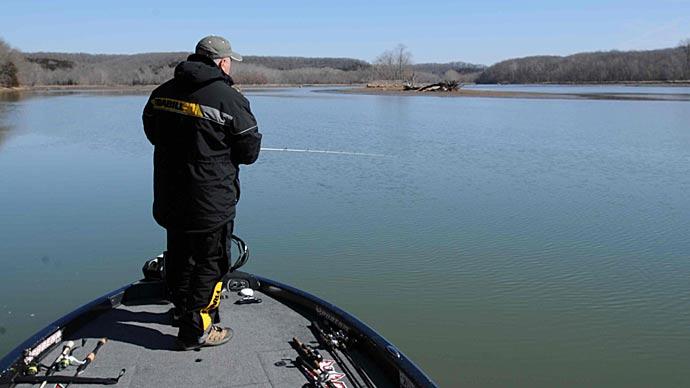
You may like fishing this little 30-acre lake that could be rough on your gel coat. Perhaps, there is a slough you like to fish but can't get a big boat into the area. If you face any of these dilemmas, take heart, BassResource is here.
This is the first three-part series in which we convert a used aluminum boat into a practical and fun fishing boat.
For this project, we first located an inexpensive used boat and began shopping for products to complete the boat. Many of the products utilized are used, and some are new. Of course, if you choose to start a similar project, your costs may vary, and you could have different needs that could change your expenses.
The Boat
We thought long and hard about the boat. We decided on an aluminum V-bottom because of its versatility. A flat-bottom Jon boat is a great choice, but the V-bottom will handle better if you are in an area where the water can get rough. We needed a boat at least 14 feet in length to provide enough space for storage and anglers. The 14-footer will also handle the extra weight added by the battery, decking, storage compartments, and a trolling motor and graph.
Another factor was stability. Our boat needed to be a wide-body boat, providing better side-to-side stability. And, of course, it had to be affordable (cheap).
Luckily, the folks out at the Kelsey Bass Ranch near Merced, California, had just the ticket. The boat has been used for years at the ranch, taking clients, friends, and family for a day on the water. It is a solid craft that fits all of our requirements. It was a little beat up, and the splotchy green paint job wasn't beautiful, but it had the basics. The Kelsey Bass Ranch made us a deal on the boat, and we hauled back to Utah to begin the project.
What To Do First
The next thing on our agenda was to locate items needed for the project. Also, to discuss what we would need, keeping costs in mind and factoring weight and weight distribution, along with angler comfort and practicality.
The Motor
The boat would need a motor. We looked around and talked about the required size of the motor. We decided that a 9.9 to 15-horsepower motor would work well for the project. The problem with this is that 10- to 15-horse motors are very popular and challenging to find. Several people offered us great deals on a 40-horse motor (just a bit too much power), and others wanted to sell us 5-horse motors (a bit too weak).
Luckily for us, Brent Halstrom, at Halstrom Marine in American Fork, Utah, located a Mercury 9.8-horse motor in excellent shape. Brent went through the motor to ensure everything was ship-shape and then called us. The motor cost $700, a far cry from the nearly $2,000 price tag of a new motor.
While many thought it would have been better to hook it up to a 15-horse motor, the difference between the two is not very noticeable, and besides, we used what was available.
The Electronics
What bass boat would be complete without electronics? Yep ... that's what we thought too. Again, we looked at costs, practicality, and weight. This brought us to one conclusion: the Eagle Fish Easy. The folks at Eagle have come up with a great combination of a low-priced graph with high-priced features.
The FishEasy we purchased came with both temperature (essential to bass anglers) and speed (not so essential in a boat loaded with a power-packed 9.8- horsepower motor). The FishEasy is simple to operate and has excellent visibility with a 128 vertical pixel, SuperTwist display. The FishEasy has a sharp screen detail for better target separation. It also has what the company calls its ST Grayline feature. This feature helps separate fish and important structure on or near the bottom from the actual bottom. It helps to distinguish between hard and soft bottoms for improved interpretation of the bottom composition. The fish finder also features Eagle's Fish I.D. and their FishTrack. Eagle's selective on/off Fish I.D. and FishTrack features conveniently display fish symbols in different sizes with corresponding digital depth read-outs, making precise lure presentations easier. When you need details about thermoclines, baitfish, or fish movements, you turn off the Fish I.D. and view actual sonar returns.
This Eagle FishEasy costs between $155 to $170, depending on where you purchase it and precisely what features you are looking for. Because of the features and relatively small size, the FishEasy was the perfect choice for this project.
The Trailer
Of course, our project boat would need a trailer. The old boat took three people to lift and tie on top of my pickup for the ride back to Utah without anything added. We shopped all over, looking for a used trailer. We found several of them ranging in price from $200 to $600. Then we noticed that Cabela's sells a trailer for a 14-foot boat that would fit the bill perfectly. The trailer is brand new but comes in sections that allow even those not the most adept with tools to put it together quickly.
The trailer sells for approximately $500 and comes with a lighting kit and 12-inch tires. We decided to go ahead and spend a little extra on the trailer and have a trailer we could have a lot of confidence in.
These are the basic requirements for the project boat. Next, we look at a trolling motor, decking, and carpeting. The last part of the project will involve wiring, seating, and storage. Keep reading and see how the finished project will look.



